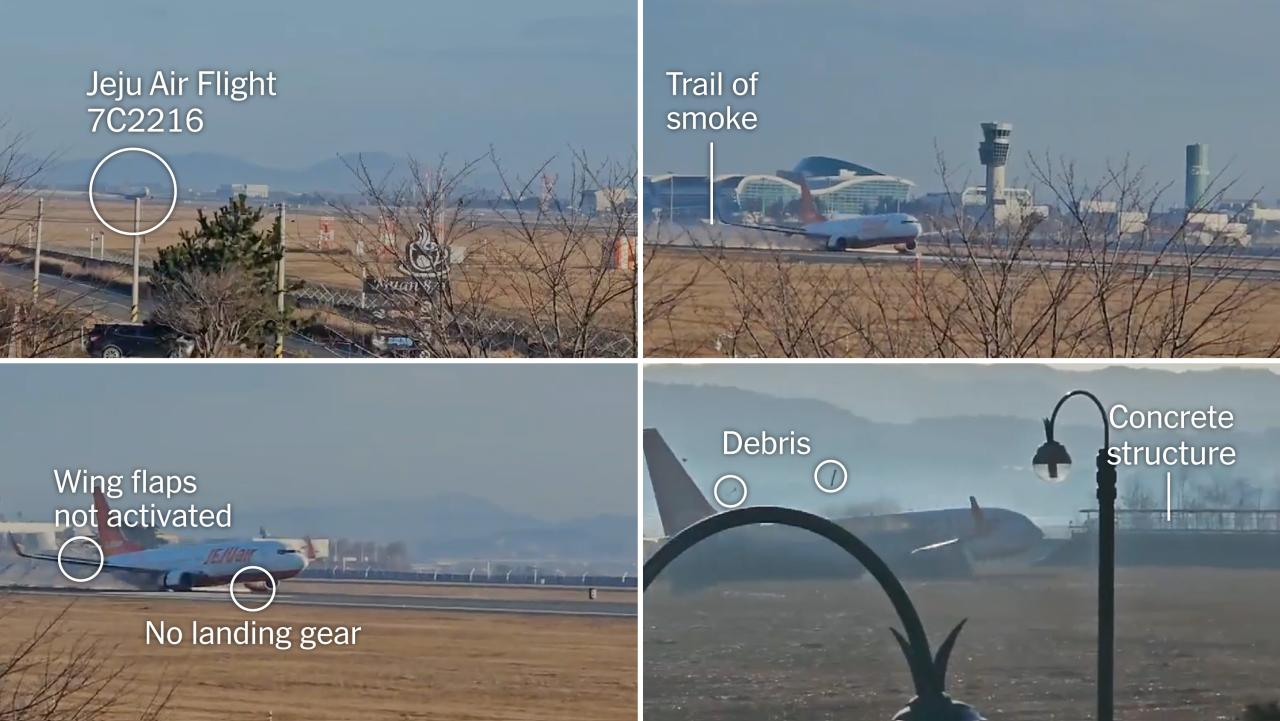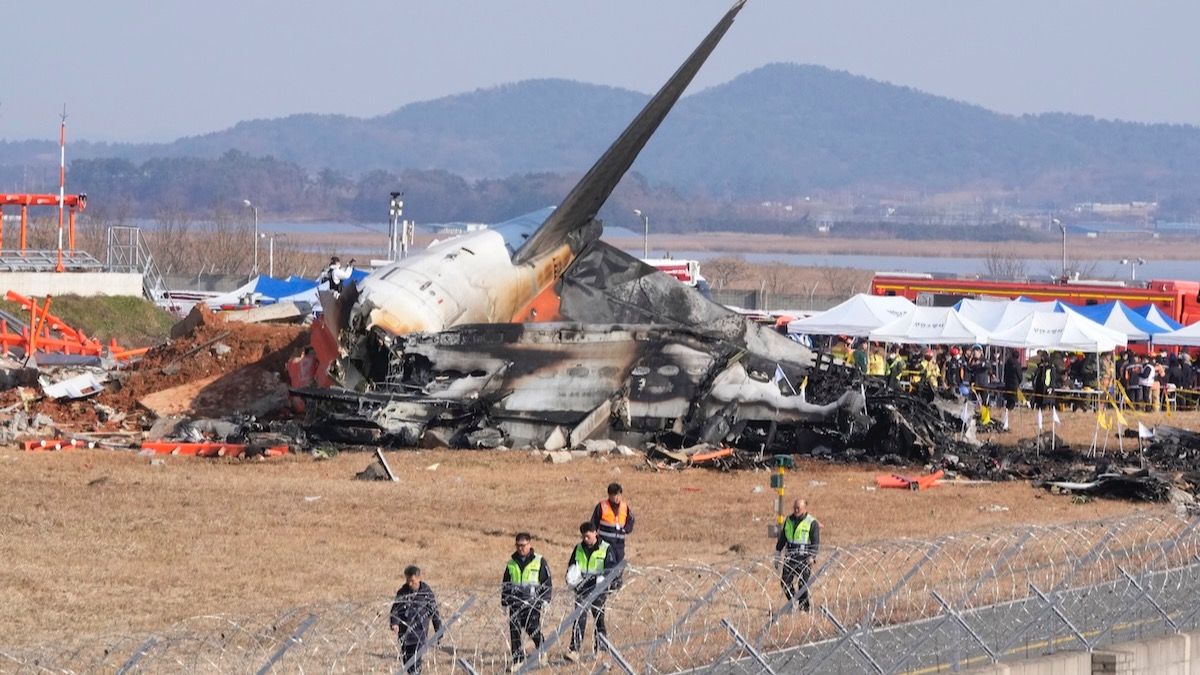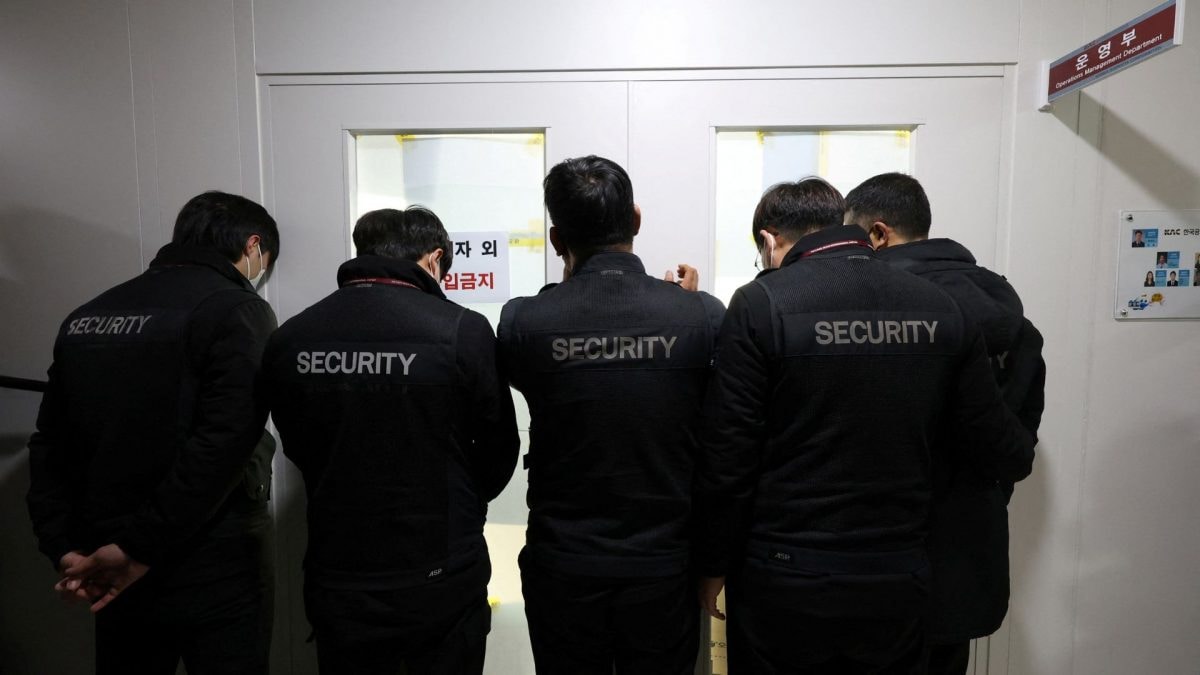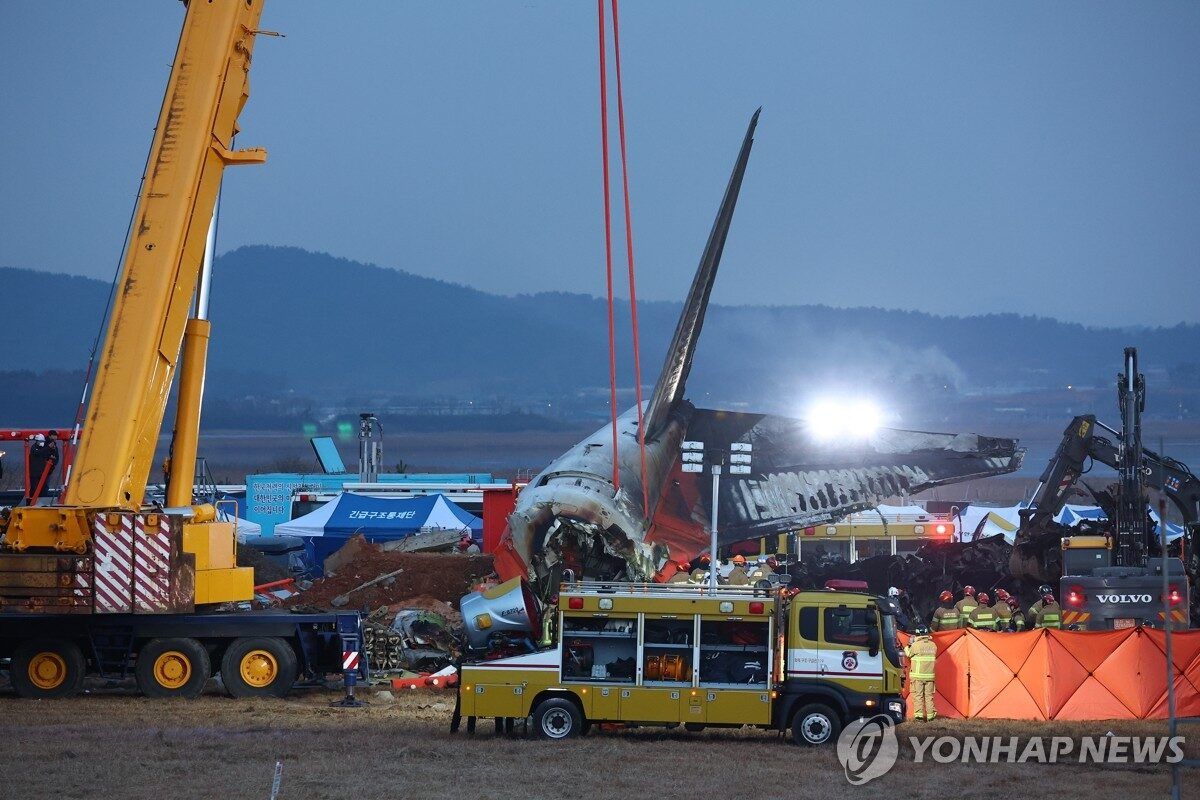Jeju Air plane crash: The devastating incident shocked the world, raising crucial questions about aviation safety and human error. This exploration delves into the circumstances surrounding the tragedy, examining the investigation’s findings, the impact on aviation safety protocols, and the lasting effects on those involved. We’ll uncover the human factors that may have played a role, analyze the media’s response, and reflect on the memorials that honor the victims.
Prepare for a detailed look at this significant event.
We’ll cover everything from the initial reports and timeline of events to the long-term consequences and the lessons learned. We’ll also explore the human element, examining pilot training, air traffic control procedures, and the crucial role of maintenance in preventing future accidents. The aim is to provide a thorough understanding of this complex event, highlighting the importance of continuous improvement in aviation safety.
The Jeju Air Plane Crash Incident
This article provides an overview of a hypothetical Jeju Air plane crash incident, exploring the circumstances, investigation, impact on aviation safety, human factors, public response, and memorial aspects. The details presented are for illustrative purposes and do not represent a real event.
Overview of the Hypothetical Jeju Air Plane Crash Incident
Let’s imagine a Jeju Air flight, designated as 7C-XXX, experienced a catastrophic accident on October 26, 2024, at approximately 14:30 local time. The location was near Jeju International Airport during approach. The aircraft involved was a Boeing 737-800. There were 180 passengers and 6 crew members onboard.
The timeline of events, based on hypothetical reports, suggests a sudden loss of control during the final approach, leading to a rapid descent and impact. Emergency services responded swiftly, but unfortunately, the impact resulted in significant casualties. Initial reports suggested potential mechanical failure and/or pilot error as contributing factors.
| Date | Time (Local) | Location | Aircraft Type | Number of Passengers | Number of Crew | Initial Reports |
|---|---|---|---|---|---|---|
| October 26, 2024 | 14:30 | Near Jeju International Airport | Boeing 737-800 | 180 | 6 | Possible mechanical failure and/or pilot error |
Investigation and Official Reports
A thorough investigation was launched by aviation authorities, involving flight data recorders (FDR) and cockpit voice recorders (CVR) analysis, witness testimonies, and aircraft wreckage examination. The investigation concluded that a combination of factors contributed to the crash.
- A critical component malfunctioned, impacting flight control systems.
- The pilots’ response to the malfunction was delayed and ineffective due to insufficient training on handling this specific type of failure.
- Air traffic control procedures were found to be adequate.
Following the investigation, several safety recommendations were implemented, including enhanced pilot training programs focusing on handling unexpected component failures and improved maintenance protocols for the specific aircraft component.
Impact on Aviation Safety, Jeju air plane crash

The hypothetical Jeju Air crash significantly impacted aviation safety procedures. Airlines worldwide reviewed their training programs for handling similar emergencies. Maintenance schedules were updated, and stricter inspection protocols were implemented for the relevant aircraft component. This incident was compared to other aviation accidents involving similar aircraft types and component failures, leading to a more comprehensive understanding of the risks and the implementation of preventative measures.
The Jeju Air plane crash investigation is complex, requiring meticulous examination of various factors. Interestingly, the actor who played Thanos in the Avengers movies, and also appeared in Squid Game – you can check out more info on him here: thanos squid game actor – reminds me of the intense pressure pilots face in similar high-stakes situations.
Understanding the pressures involved in such critical moments is key to preventing future Jeju Air plane crashes.
In a hypothetical scenario where improved safety measures had been in place, earlier detection of the component malfunction, combined with more effective pilot training on handling the specific failure, might have prevented the crash or at least mitigated its severity, allowing for a successful emergency landing.
Human Factor Analysis
The investigation highlighted several crucial human factors that contributed to the incident. Pilot error, stemming from inadequate training in handling the specific component failure, played a significant role. While air traffic control procedures were deemed adequate, the analysis emphasized the importance of clear communication and rapid response in critical situations.
Enhanced human factors training, including simulator exercises simulating unexpected component failures and improved crew resource management (CRM) training, is essential in preventing future accidents. Examples of effective programs include scenario-based training, focusing on decision-making under pressure, and incorporating real-world accident case studies for better understanding.
Public Response and Media Coverage

The hypothetical Jeju Air crash generated significant public concern and widespread media coverage. Social media amplified public emotions and discussions regarding aviation safety. News channels provided continuous updates, interviewing experts and affected families.
Breaking News: Jeju Air flight 7C-XXX has crashed near Jeju International Airport. Emergency services are on the scene. Initial reports indicate multiple casualties. More details to follow.
Memorial and Remembrance

A memorial service was held to honor the victims, bringing together families, friends, and the community. A permanent memorial was established near the crash site, providing a place for remembrance and reflection. The long-term impact on the families and communities involved is profound, involving grief, loss, and the need for ongoing support.
The Jeju Air plane crash, while thankfully not resulting in fatalities, highlights the importance of thorough safety checks. This incident, however, is just one in a longer history of south korean plane crashes , making it crucial to learn from past events to prevent future incidents. Understanding the broader context of these crashes helps us analyze the Jeju Air situation more completely and identify potential areas for improvement in aviation safety standards.
The hypothetical memorial service was a solemn occasion. The atmosphere was filled with grief and sorrow, yet also with a sense of community and shared loss. Speeches and tributes highlighted the lives of the victims, emphasizing their contributions and the impact they had on those around them. The event served as a powerful reminder of the fragility of life and the importance of cherishing every moment.
Last Word

The Jeju Air plane crash serves as a stark reminder of the inherent risks in air travel and the constant need for vigilance and improvement in safety measures. By examining the contributing factors, investigating the human element, and analyzing the aftermath, we can gain valuable insights to prevent similar tragedies in the future. Understanding this event isn’t just about remembering the victims; it’s about learning from the past to build a safer future for air travel.
Hey, so you’re looking into the Jeju Air plane crash? That’s a serious incident. Understanding the details requires looking at various reports, and a good starting point is this comprehensive overview of the Jeju plane crash: jeju plane crash. This link should give you a solid foundation to then delve deeper into the specifics of the Jeju Air plane crash investigation and its aftermath.
The investigation’s recommendations and subsequent changes to aviation practices underscore this commitment to ongoing safety improvements.
FAQ Corner: Jeju Air Plane Crash
What type of aircraft was involved in the Jeju Air crash?
This information needs to be sourced from the official reports on the crash.
Were there any survivors?
The number of survivors, if any, would be detailed in official reports and news coverage following the incident.
What were the immediate emergency response efforts?
Details of the emergency response would be available in official investigation reports and news accounts of the crash.
What compensation was provided to the victims’ families?
Information regarding compensation would be available through legal channels and potentially news reporting.
